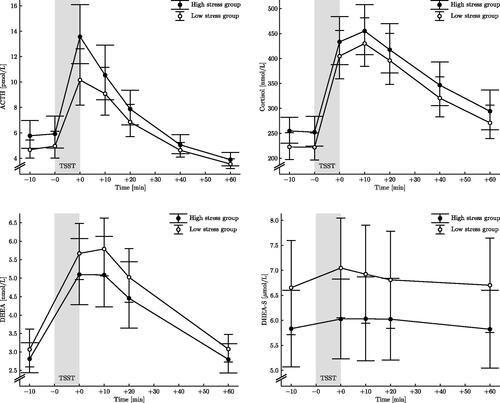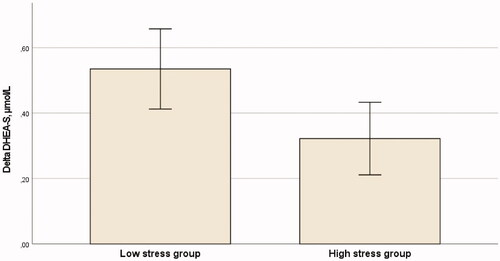Figures & data
Table 1. Number of men and women, age and basal hormonal levels in the two stress level groups.
Figure 1. Levels of ACTH, cortisol, DHEA and DHEA-S (mean, 95% CI) during the experiment in the two stress level groups.

Figure 2. Delta DHEA-S (mean, 95% CI) in the low stress group and in the high stress group.

Figure 3. The ratio between delta DHEA-S and delta ACTH (mean, 95% CI) in the two stress level groups.

